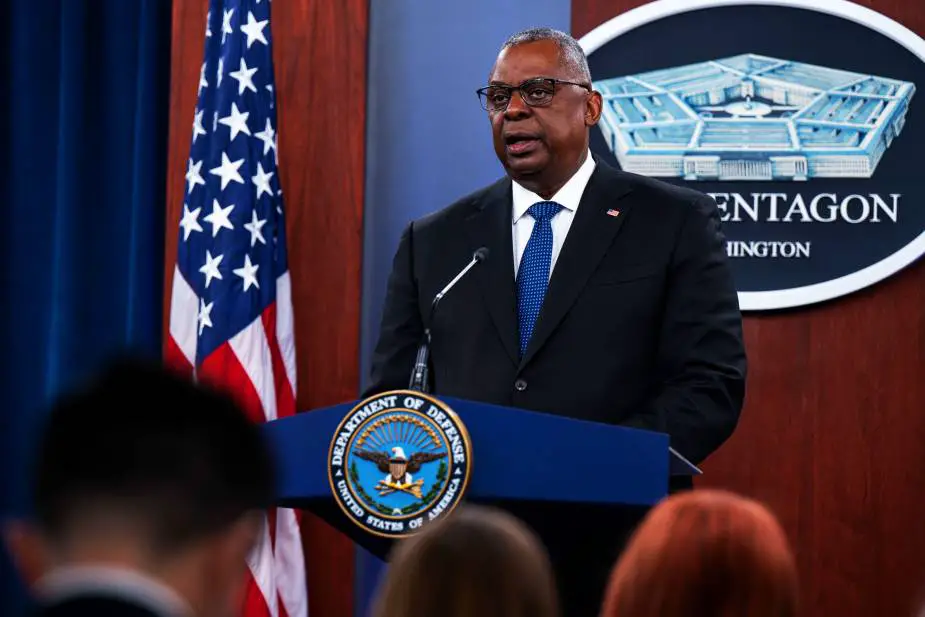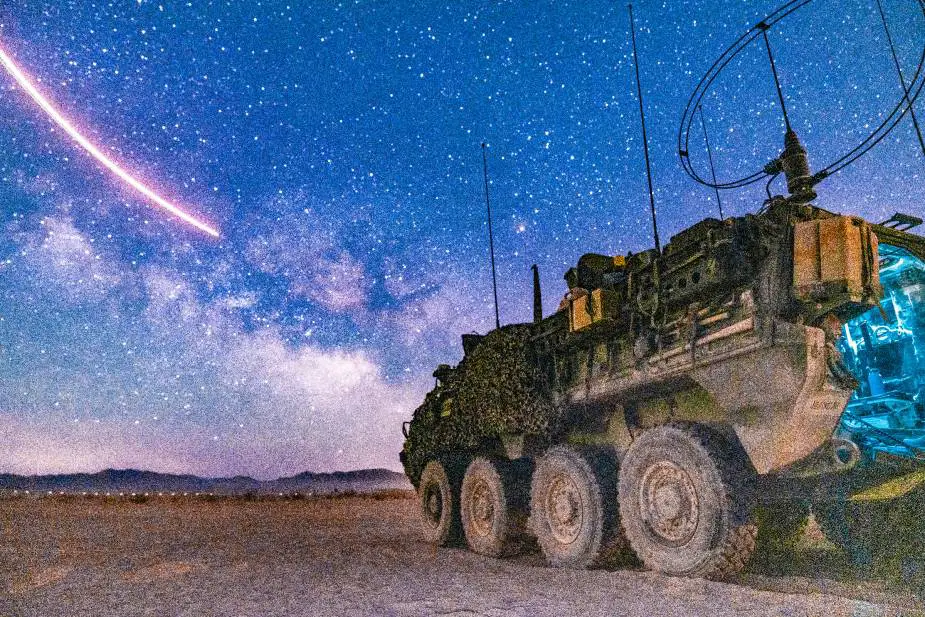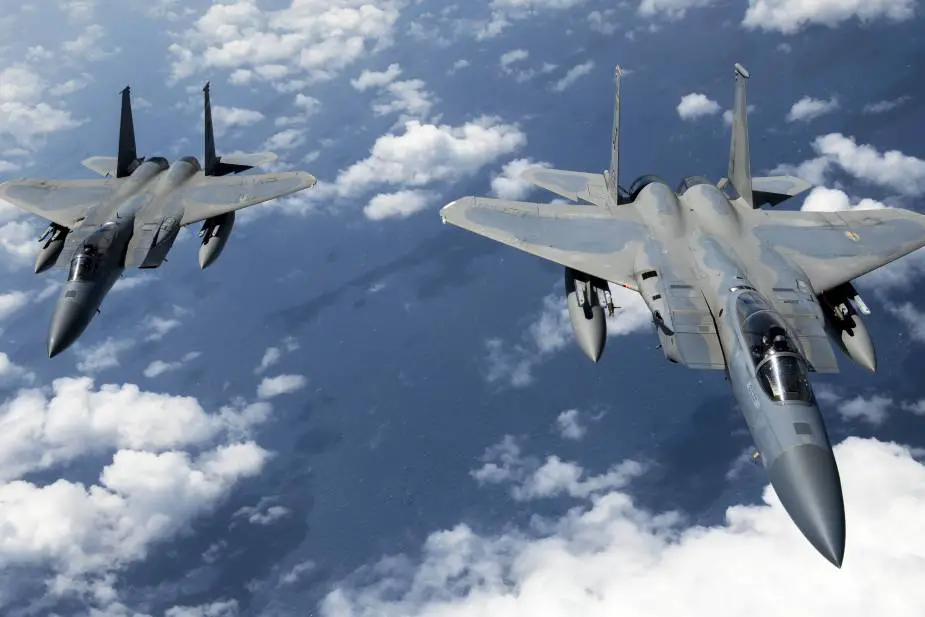Breaking news
US DoD releases National Defense Strategy, Missile Defense and Nuclear Posture reviews.
On October 27, the U.S.Defense Department for the first time released the public versions of three strategic documents – the National Defense Strategy, the Nuclear Posture Review and the Missile Defense Review — together after having developed both the classified and unclassified versions of all three in conjunction with one another. C. Todd Lopez, of the U.S. DoD, reports.
Follow Army Recognition on Google News at this link

U.S. Secretary of Defense Lloyd J. Austin III conducts a press briefing at the Pentagon, Oct. 27, 2022 (Picture source: Navy Petty Officer 2nd Class Alexander Kubitza)
Producing the documents together, said Secretary of Defense Lloyd J. Austin III, ensured tight linkages between DOD strategy and resources. "By weaving these documents together, we help ensure that the entire Department is moving forward together, matching our resources to our goals," Austin said. "The strength and combat credibility of the joint force remains central to integrated deterrence."
The 2022 National Defense Strategy, or NDS, places a primary focus on the need to sustain and strengthen U.S. deterrence against China. It also advances a focus on collaboration with a growing network of U.S. allies and partners on shared objectives.
In addition to addressing both China and an increase in the importance of partnerships, the NDS also takes into account the challenges posed by Russia — especially considering its invasion of Ukraine — along with threats posed by North Korea, Iran and violent extremist organizations. The NDS also includes a focus on challenges to security, such as pandemics and climate change.
The NDS lays out four top-level defense priorities the department must pursue. They include:
• Defending the homeland, paced to the growing multi-domain threat posed by China
• Deterring strategic attacks against the United States, allies, and partners
• Deterring aggression while being prepared to prevail in conflict, when necessary; prioritizing the challenge posed by China in the Indo-Pacific region the Russia challenge in Europe
• Building a resilient joint force and defense ecosystem
The NDS provides three ways to advance those priorities, Austin said. These include integrated deterrence, campaigning, and the building of an enduring advantage. "We're seamlessly integrating our deterrence efforts to make a basic truth crystal clear to any potential foe," Austin said. "That truth is that the cost of aggression against the United States or our allies and partners far outweigh any conceivable games."
To do that, the Secretary said, the Department is aligning its activities and investments across all theaters, across the full spectrum of conflict, and across all domains. This includes also space and cyberspace.
With the U.S. nuclear capability remaining the "ultimate backstop" for strategic deterrence, the Secretary said the Department plans to continue modernization efforts on the nuclear triad. The fiscal 2023 budget request, for instance, includes some $34 billion to sustain and modernize nuclear forces.

The Nimitz-class aircraft carriers USS George H.W. Bush and USS Harry S. Truman travel in the U.S. Naval Forces Europe area of operations, Aug. 27, 2022 (Picture source: Petty Officer 2nd Class Novalee Manzella)
The budget request also includes more than $56 billion for air-power platforms and systems, more than $40 billion to maintain U.S. dominance at sea, and nearly $13 billion to support and modernize land forces.
"Integrated deterrence isn't just about steps that we take on our own," he said. "It also means working even more closely with our unparalleled network of allies and partners to deter aggression in region after region," he said.
In the Indo-Pacific region, he said, that's evident with the Australia, U.K., U.S., or AUKUS agreement, and in the trilateral cooperation agreement with Japan and Korea. Across the Atlantic, he said, partnerships that support integrated deterrence efforts include NATO and the recently created Ukraine Defense Contact Group, which helps support Ukraine's self-defense goals.
Campaigning, Austin said, means conducting and sequencing the military activities which over time shift the security environment in favor of the United States. "It means working to limit and disrupt malign activities by our competitors," he said. "We're building and exercising the forces that we'll need in a crisis or a conflict, including requesting $135 billion dollars in last year's budget to further invest in our readiness."

An Army Stryker parks at a remote location of the National Training Center during a moonless, open sky where the milky way was visible near Ft. Irwin, Calif., May 24, 2022 (Picture source: Army Staff Sgt. Christopher Stewart)
To build an enduring advantage for the United States, Austin said, the Department is working to further strengthen the foundations of the defense enterprise. "Innovation is central here," he said. "Last year, for instance, we established the Rapid Defense Experimentation Reserve, which funds different parts of the department to work together to fill critical joint warfighting gaps. And our fiscal year 2023 budget request included more than $130 billion for research, development, testing and evaluation — that's the largest R&D budget number in DOD history."
The Department is also working with industry partners to strengthen supply chains within the defense industrial base, and tackle the dangers of climate change, including ensuring that the military can continue to operate in both hotter and harsher environments.
"Above all, the NDS demands even deeper investments in our people," Austin said. "They will always be this department's most valuable resource and the bedrock of American security. And that's why the president's budget includes a 4.6% pay raise for service members starting January 1, 2023."
The secretary announced in the Sept. 22 memorandum "Taking Care of Our Service Members and Families", Departmental efforts to better take care of both service members and their families, including efforts to make it easier to secure housing, to move to new duty stations, to find childcare, and help military spouses find work. "Our outstanding service members and their families do everything that we ask of them and more," Austin said. "Doing right by them is a national security imperative, and it's a sacred trust. So, we're looking forward to working with Congress to secure on-time appropriations to finalize this year's National Defense Authorization Act, and to continue to implement this strategy."
The classified versions of the NDS, NPR, and MDR were transmitted alongside the FY 2023 budget submission to Congress. The unclassified versions of the three documents are also available on DOD's website.

Two Air National Guard F-15C Eagles fly during Operation Noble Defender over the Caribbean Sea near Puerto Rico, June 29, 2022. (Picture source: Air Force Staff Sgt. Lawrence Sena)


























